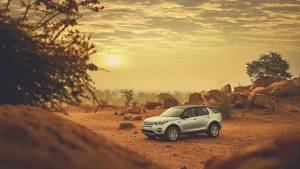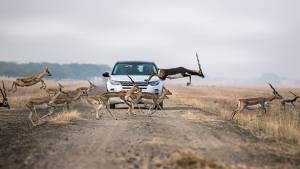Never Stop Discovering: Bera-Jawai in Rajasthan
Followers of this series will be aware that last month, we explored the 'Deccan Plateau' region, and discovered the wildlife living amongst humans in an unprotected area. This time, we drove to 'Bera-Jawai, the 'Land of Leopards' in Western Rajasthan.
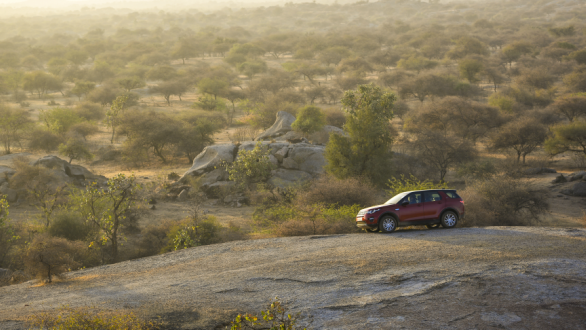 The Bera-Jawai region has some great off-roading terrain
The Bera-Jawai region has some great off-roading terrain
I had first visited this region over 25 years ago, when a few knew of the leopards that reside here. Bera is situated amongst the rocky hills that are part of the Aravalli Range, which consists of the oldest mountains in India. In recent years, Bera has been acknowledged as possibly one of the easiest places in the world to spot, Mr. Spots. So I was all excited about tracking and sighting the 'Leopard in his Lair'. Joining me on this 'Journey of Discovery' was, Jayanth Sharma, a highly committed and renowned wildlife photographer. We drove down in the comfortable and fun to drive the Land Rover Discovery Sport, through whose windscreen I have lately been viewing a lot of beautiful places and wildlife.
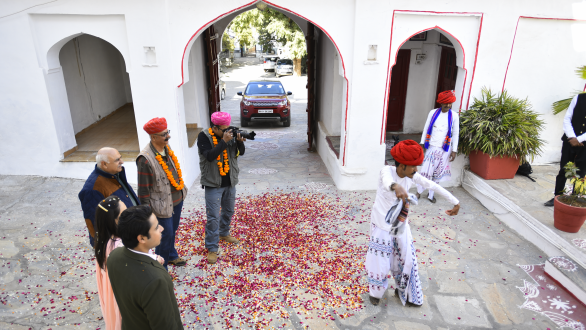 Being welcomed at the 300-year old Castle Bera by traditional folk dancers
Being welcomed at the 300-year old Castle Bera by traditional folk dancers
We reached just as the setting sun was kissing the horizon and at the gates of Castle Bera, were accorded a traditional 'royal welcome' complete with showering of flower petals and traditional folk songs being sung by local musicians. My dear old friend Vinku (Thakur Baljeet Singh) and his young son, Kunwar Yaduveer Singh welcomed us warmly into their historic home and as we were in the middle of a cold wave that had enveloped the region, they soon had us settled around a cozy campfire in the courtyard. Jayanth was quickly brought up to date with the recent sightings and known movements of leopards in the area, and as we retired for the night, I thought I heard someone in the distance singing, "Bera, Bera, this is where I spot Mr. Spotsâ¦"
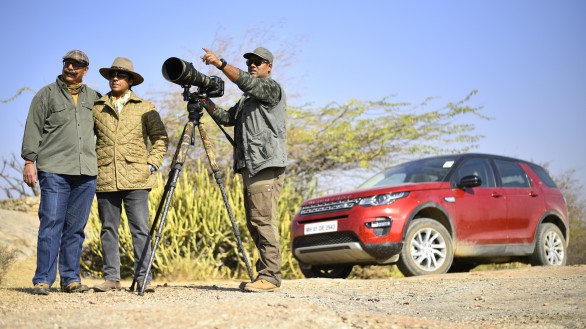 Bob, Jayanth and Kunwar Yadveer Singh of Castle Bera
Bob, Jayanth and Kunwar Yadveer Singh of Castle Bera
Next morning, we were on our way well before dawn. It was bitterly cold and completely deserted and our plan was to position ourselves in the vicinity of some caves amidst the rocky outcrops. Vinku and Yaduveer informed us that the age-old hills here are full of natural cracks and crevices and that there are many interconnected hollows too. All these are a result of erosion caused over several centuries, due to the passage of wind, water and sand. Leopards just love this kind of terrain. They can conceal themselves deep within their dens and as we were to realise later, they know their way around so well, that they often enter a cave on one side of the hill and exit from a cranny on the opposite side. At night, they usually prowl around to prey on the nilgai (India's largest antelope), chinkara (Indian gazelle), porcupines, hares or langur monkeys, which also dwell here. But as their numbers are not too large and they are also more difficult to hunt, the leopards largely survive on dogs and the goats and other cattle kept by the native tribal Rabaris. These simple shepherds have co-existed alongside these leopards for ages, and continue to do so even now, with minimum conflict between them.
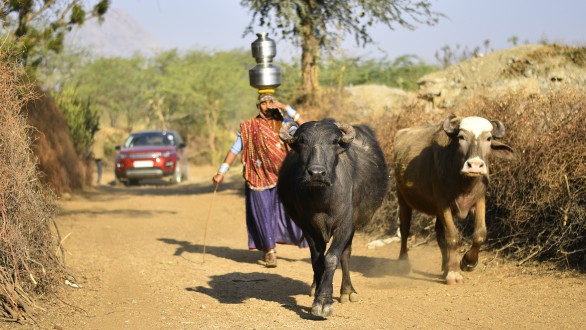 The lifestyle of the Rabari shepherds has changed little with time
The lifestyle of the Rabari shepherds has changed little with time
I am told this is because the shepherds respect and accept the fact that the wild animals also have a right on the land  and losing some livestock to them, is just another aspect and hazard of living in this difficult and rugged region.
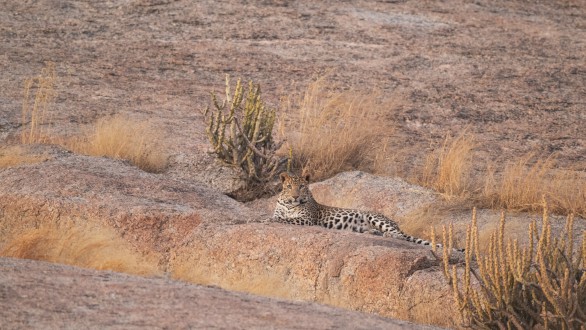 Bera is one of the easiest places to look at leopards
Bera is one of the easiest places to look at leopards
Interestingly, despite the presence of leopards in such large numbers, this area has not been declared a wildlife sanctuary as it's dotted with numerous villages and the leopards of Bera have been living in harmony with humans, for decades. There are proposals to have it declared a 'community reserve' of some sort, but all this is still in the offing. Nevertheless, I think something will have to be done soon, to properly manage the rampant tourism that Bera is witnessing presently.
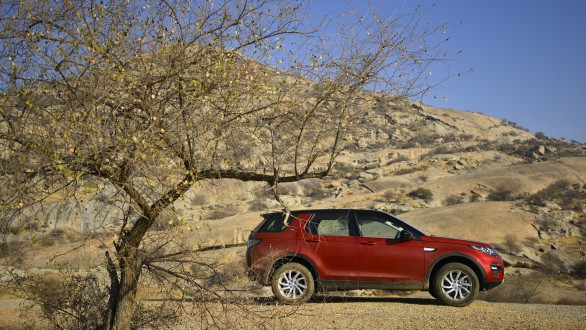 The all-terrain capability of the Discovery Sport proved to be very useful in exploring this rugged and harsh desert land
The all-terrain capability of the Discovery Sport proved to be very useful in exploring this rugged and harsh desert land
Our vigil at the rock soon paid off as we spotted Mr. Spots gracefully walking along a ridge. But the moment it became aware of our presence it smartly slipped behind a rock. Now the adrenaline was flowing and I located a place where I could position the Land Rover Discovery Sport and use its immensely capable 4X4 and highly adaptive terrain- response system, to drive up into the hill. Picking and selecting my path carefully and by gently caressing the throttle, I was able to get us closer to the leopard and Jayanth swiftly pressed the shutter to capture some nice images before it took off again.
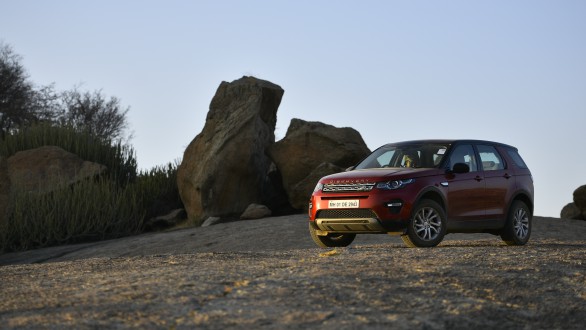 On the rocks
On the rocks
Having had a 'Taste of the Terrain', I got even more adventurous and discovered that by delicately guiding the Discovery Sport, meticulously placing the wheels and precisely using the controls, I could climb even higher onto the hill. While Jayanth was thrilled at sighting Mr. Spots, I was ecstatic about 'Driving on the Rocks'. Later that night, while in bed cuddled under the locally made Bera quilt, I thought I heard myself humming, "Bera, Bera, this is where I 'Drive on the Rocks'â¦"
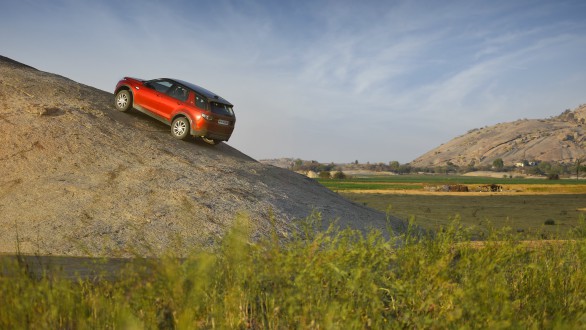 The Land Rover Discovery Sport easily went up the rocky hills
The Land Rover Discovery Sport easily went up the rocky hills
The next couple of days were spent scouting the hills and driving on the rocks. We saw leopards on two more occasions, once just as the sun had set. One moment it was right there on the rock in front of us, and next it was gone. Behru, Vinku's driver/spotter who was with us, told me this leopard had entered a cave and could just step out on the other side of the hill. Being confident that the Land Rover Discovery Sport with its all-terrain ability and strong build and suspension, would easily traverse the uneven path through the desert countryside, I simply pointed it in the direction suggested by Behru. And sure enough, as soon as the sure- footed Discovery Sport began climbing up the hill, there was the leopard illuminated in the evenly spread beam of our bright headlights. Jayanth took another magnificent photograph and we promptly drove off, as we did not want to intrude anymore on the leopard's space.
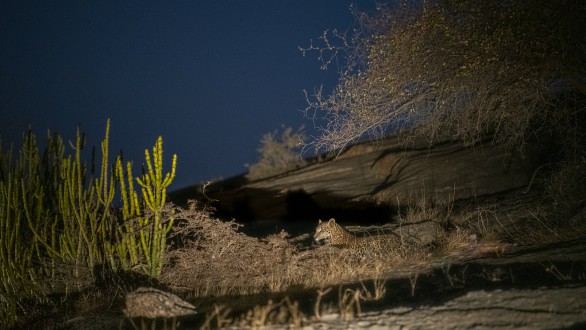 Mr.Spots seen in the evenly spread beams of the headlights
Mr.Spots seen in the evenly spread beams of the headlights
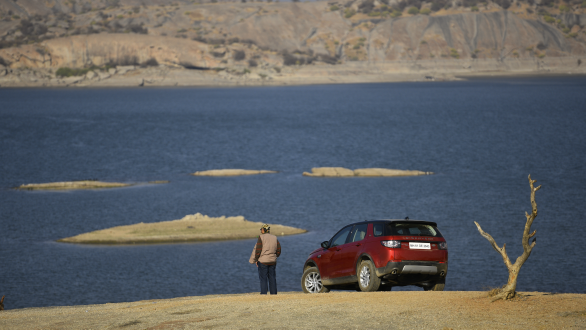 Looking for crocodiles in the Jawai Lake
Looking for crocodiles in the Jawai Lake
Having been fortunate to be blessed with several sightings of Mr. Spots, we now shifted our focus to the Jawai Bandh area, which is the largest man-made dam in Western Rajasthan. The blue lake here shimmers like a jewel in this desert land, and attracts a lot of migratory birds. The waters are full of fish and it is estimated about 500 crocodiles also stay here. We saw a large crocodile basking in the sun and lots of birds, including some bar- headed geese, flamingos, demoiselle cranes, etc.
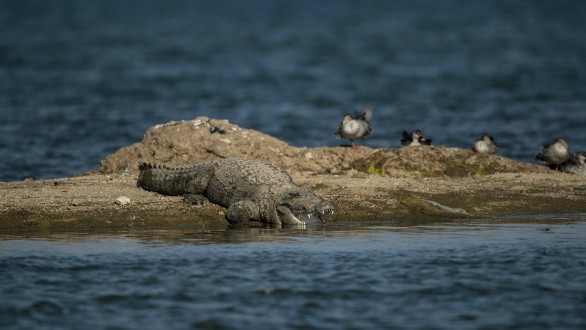 Jawai Lake is said to have about 500 crocodiles
Jawai Lake is said to have about 500 crocodiles
Our last evening was again spent by the campfire and in the clear unpolluted sky above, I could see hundreds of twinkling stars and realised that Bera is not just a great place to see leopards, but also an ideal one for stargazing.
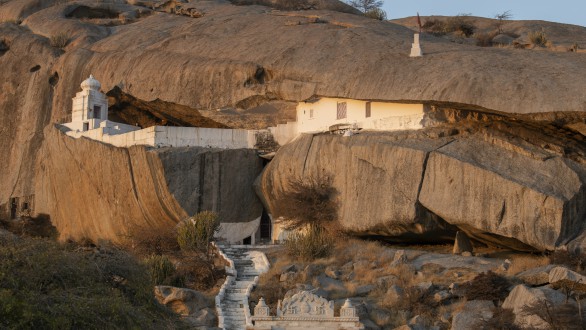 Leopards are sometimes sighted on the steps of this ancient temple
Leopards are sometimes sighted on the steps of this ancient temple
Some questions keep coming back to me though â" will the leopards of Bera always continue living in harmony with the people? How will this huge influx of tourists, many of them not exactly sensitive to wildlife, affect the fine balance? And how do we more effectively spread the message, that these wonderful creations of God have an equal claim on Earth, and that animals have the right of way. Always.
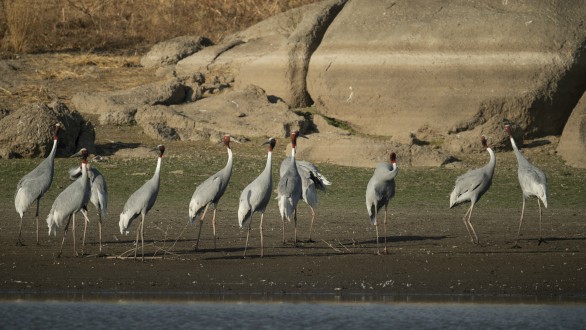 Sarus Cranes at Jawai Lake
Sarus Cranes at Jawai Lake
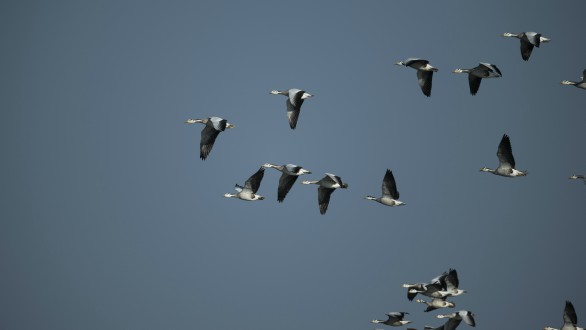 Bar-headed geese migrate from Central Asia to India in the winters
Bar-headed geese migrate from Central Asia to India in the winters
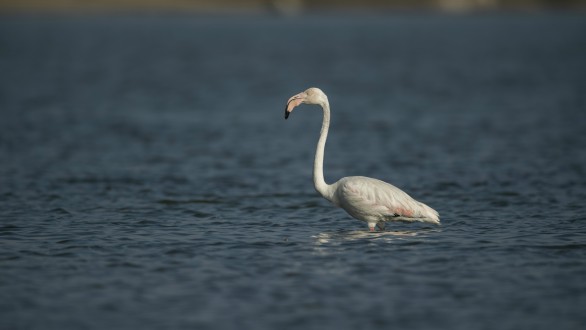 In the winters, Flamingos love to visit the Jawai Lake
In the winters, Flamingos love to visit the Jawai Lake
Jayanth Sharma
Effortlessly combining natural history and fine-art elements, renowned wildlife photographer Jayanth Sharma brings back rarely seen perspectives from the little-visited domains and far corners of the natural world.
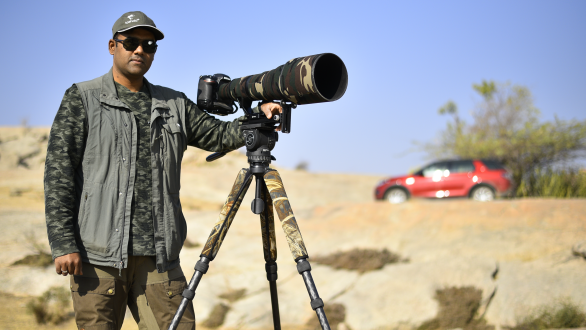 Renowned wildlife photographer Jayanth Sharma accompanied us on this wild expedition
Renowned wildlife photographer Jayanth Sharma accompanied us on this wild expedition
Behind Jayanth's awe-inspiring work is a fierce commitment to nail the composition in the field, an assiduous abstinence from digital manipulation, a nearly devotional love for quality, and zero appetite for compromise. Jayanth uses the strengths of his tools to his immense advantage, creating powerful vignettes of optical excellence designed to pamper the aesthetic corner of a nature lover.
Travelling is oxygen for Jayanth, and he wants to explore all possible natural hotspots of the world while he's on the planet. His unique expertise in photographing in a truly eclectic range of wilderness areas â" from Arctic to Antarctica, eastern Russia and Southeast Asia to Canada, Brazil, Costa Rica, Chile and Argentina to Norway and a lot of Africa, is supplemented by his immense experience in the Indian Subcontinent. Having worked in the mighty Himalayas, the unexplored Northeast, the secretive South and the tiger havens of Central India, Jayanth is a homegrown photographer gone totally global. He loves Polar Bears and the Arctic, the Hummingbirds in South and Central America, Brown Bears in Kamchatka and of course the big cats of India and Africa. He also is an avid underwater photographer and diver.
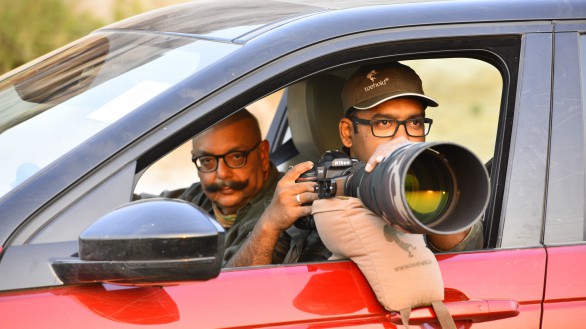 Bob watching Jayanth create his evocative images
Bob watching Jayanth create his evocative images
Jayanth hosts photo tours across the globe and his participants find in him not only a brilliant mentor, but also a sparkling inspiration to conceive and execute images they had hitherto probably never imagined. Jayanth also teaches photography on Amazon Shutterbug, Amazon India's Online Photography Club apart from conducting workshops for his company Toehold across India and the globe.
Castle Bera
Offers an alluring homestay in a 300-year-old ancestral castle or Rawla, as it's termed locally. Yes, Thakur Baljeet Singh (better known as Vinku) and his son Kunwar Yaduveer Singh, who has done his hotel management in Manipal, Karnataka, have thrown open the massive wooden doors of their rural and regal heritage home for paying guests.
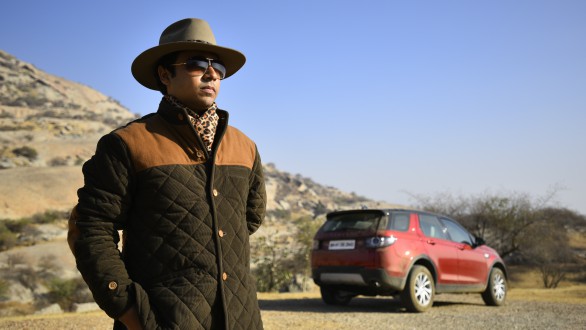 Kunwar Yaduveer Singh wearing one of his signature Bera Jackets
Kunwar Yaduveer Singh wearing one of his signature Bera Jackets
Situated in the heart of the rustic hamlet of Bera, near the Jawai Bandh or Dam in Western Rajasthan, Castle Bera is famous for its 'leopard safaris'. Vinku is a keen wildlife enthusiast and has personally trained his team of drivers, spotters and trackers, and they have an enviable record of showing guests leopards. The rooms with modern amenities are comfortable and Vinku is happy to meet guests and share his immense knowledge of the land, and the people and wild animals that inhabit it. But one should remember this is a homestay and not a hotel, and as all the staff consists of local villagers, things do move along at a somewhat gentle pace. For more information, visit castlebera.com.
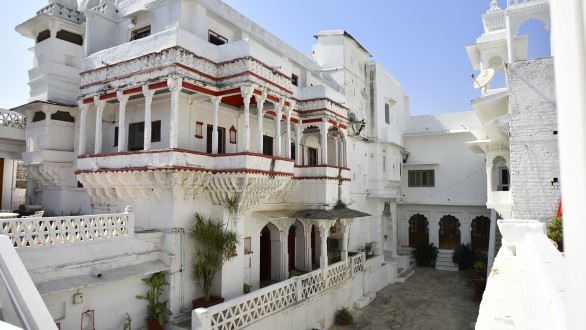 The Castle Bera offers a regal stay in this largely rural region
The Castle Bera offers a regal stay in this largely rural region
One thing that a few people know about is the 'Bera Jacket'. Kunwar Yaduveer Singh's grandfather was a talented polo player who represented the illustrious Jodhpur Polo Team. He also toured the U.K and began to dress in a distinctive jacket that he designed himself. He had these corduroy jackets made by his local tailors in Bera and as these were very smart and could be worn both outdoors and for evening functions, they became very popular. Now Yaduveer has started the 'Castle Bera Boutique' and is promoting the jackets that his grandfather designed and made fashionable. The tailors in Bera are once again using their deft fingers and age old sewing machines, to create jackets that are a stylish symbol of the nobles of Bera.
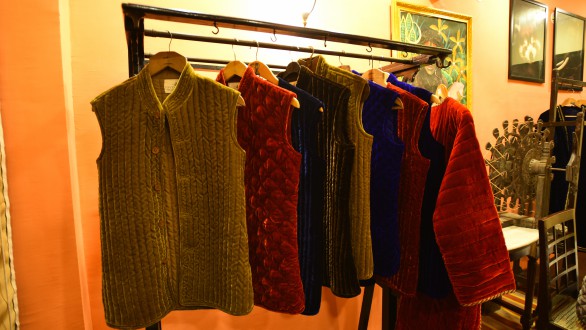 The Castle Bera Boutique is now promoting its traditonal jackets
The Castle Bera Boutique is now promoting its traditonal jackets
Images by Jayanth Sharma and Anis Shaikh
Also read,
Never Stop Discovering - The Deccan Plateau
Never Stop Discovering: Velavadar Blackbuck National Park
Starts Rs 71.38 Lakhs
2995cc
Automatic
340
450
-NA-
Starts Rs 57.06 Lakhs
1999cc
Automatic
180
365
-NA-
